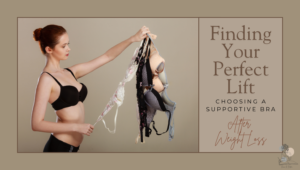
For skincare advice and beauty trends, social media is now a powerhouse. New products, routines, and miracle ingredients abound in feeds every day, offering expected transforming effects. Behind the shiny pictures and viral videos, though, false information travels just as quickly. False skincare claims compromise not only direction but also skin health. It can be difficult to separate reliable advice from marketing gimmicks since misinformation usually hides itself in appealing packaging and persuasive language. Whether its unverified advice leading to ineffective or even dangerous behavior, miracle treatments for acne, or overstated claims about anti-aging products, developing a critical eye and knowing the science behind skincare helps you avoid useless treatments and concentrate on evidence-based procedures that really support long-term health and radiance.
Acknowledge Too Simplified Skincare Products
Though social media often oversimplifies skincare into quick fixes and one-size-fits-all solutions, this is a complicated field anchored in biology and chemistry. Content that suggests unrealized results with little effort often results in misinformation. Red flags are bold assertions like “erase wrinkles overnight” or “cure acne in three days.” Biological processes like skin regeneration and healing take time; no approved treatment acts immediately. Knowing that skin cycles and usually renews itself every 28 to 40 days helps one to recognize false claims. Many times, simplified answers overlook the variety of skin types and disorders. Due to differences arising from genetics and environment, as well as skin care concerns, what works for one individual may not be applicable to another. While misinformation often ignores these subtleties, reliable skincare advice takes them into account.
Examine Skincare Claims from Science
Scientific studies support authentic skincare advice, yet many social media posts use science-sounding language to lend credibility without offering actual data. Many times, phrases like “clinically proven” or “dermatologist-approved” lack particular references to studies or peer-reviewed research. Realistic scientific skincare depends on data from published studies in credible dermatology journals and randomized controlled trials. These assertions remain dubious without explicit references or data. Many times, ingredients touted as “miracle” remedies have weak scientific backing. For instance, although retinoids and niacinamide have decades of research behind them, more recent “trendy” compounds may not have thorough testing. When scientific jargon is used improperly to advertise goods without sufficient proof, misinformation grows rampant.
Recognize Fear-Based Marketing Strategies
Skincare misinformation often uses fear-based stories to shape impressions. Posts alerting readers to “toxic” chemicals or “chemicals” without context sometimes try to cause unwarranted panic. Terms like “chemical-free” are false since all matter—including oxygen and water—consists of chemicals. This strategy takes advantage of consumer worries while ignoring scientific evidence showing many synthetic components are extensively tested for safety. Alarmist materials sometimes target preservatives like parabens or sulfates without considering their safety when used within approved levels. Scientific authorities set strict guidelines for skincare formulations; examples of such authorities are the FDA and the European Commission. Fear-based false information distorts these facts by emphasizing buzzwords over scientific agreement.
Examine the Skincare Information Source
The source of skincare advice determines its credibility. Social media lets everyone express ideas, so blurring the distinction between qualified experts and untrained bloggers. Medical researchers, cosmetic chemists, and dermatologists have the required knowledge to offer consistent findings. Many well-known stories, however, lack formal education or professional experience, which helps false assertions to proliferate. Examining the validity of skincare information depends on first confirming the credentials of content creators. Usually citing their credentials, real experts provide insights based on scientific knowledge.
Differentiate Between Personal Stories and Data
Although personal testimonies rule social media, anecdotal evidence cannot replace scientific data. Skincare false information usually thrives on personal tales that claim products are always successful. Real-life events lack the rigor and objectivity of controlled research even while they can provide insightful information. Skin health is influenced by variables including diet, genes, and environmental elements; thus, it is not possible to generalize findings from one user. Based on empirical data and repeatable results, reliable skincare recommendations are Large-scale studies covering many skin types, and long-term efficacy is the foundation of evidence-based treatments.
Conclusion
Maintaining good skin in a digital world bursting with skincare products requires discriminating truth from fiction. Separating fact from false information becomes simpler by challenging too-simplified answers, dissecting scientific claims, and identifying fear-based marketing. Examining the source and knowing the difference between anecdotes and scientific data helps even more to avoid false guidance. Giving knowledge based on science top priority over trendy ideas guarantees better skincare choices and long-lasting effects.


